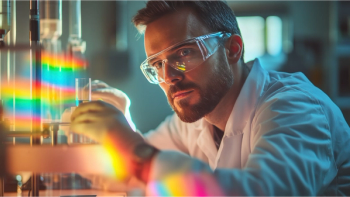
Bruker Acquires Anasys Instruments
Bruker Corporation (Billerica, Massachusetts) has acquired Anasys Instruments Corporation, a privately held company that develops and manufactures nanoscale infrared (nano IR) spectroscopy and thermal measurement instruments such as atomic force microscopy and white-light interferometric 3D microscopy.
Bruker Corporation (Billerica, Massachusetts) has acquired Anasys Instruments Corporation, a privately held company that develops and manufactures nanoscale infrared (nano IR) spectroscopy and thermal measurement instruments such as atomic force microscopy and white-light interferometric 3D microscopy. The acquisition extends Bruker’s portfolio of Raman and Fourier-transform IR (FT-IR) spectrometers and its nano-scale science instruments.
Anasys, headquartered in Santa Barbara, California, provides products used for nanoprobe-based thermal and infrared measurements. The company’s nanoIR products are used by academic and industrial scientists, by engineers in soft-matter and hard-matter materials science, and in life science applications. Recently, Anasys introduced 10-nanometer resolution nanoIR imaging.
Mark R. Munch, president of the Bruker Nano Group, said the company is excited to add this high-growth area to its portfolio of nanoscale microscopy and spectroscopy measurement products. “There are tremendous application and technology synergies that will benefit our customers,” he said.
“We are very happy to have found a company like Bruker to take the business to the next level,” said Roshan Shetty, cofounder and former CEO of Anasys.
The fifty-five-year-old Bruker Corporation has more than 6000 employees at over 90 locations on five continents. The company provides technological solutions for life science molecular research, applied and pharmaceutical applications, microscopy, nano-analysis, and industrial applications. Bruker products include systems for cell biology, preclinical imaging, clinical phenomics and proteomics research, clinical microbiology, and for molecular pathology research.
Newsletter
Get essential updates on the latest spectroscopy technologies, regulatory standards, and best practices—subscribe today to Spectroscopy.





